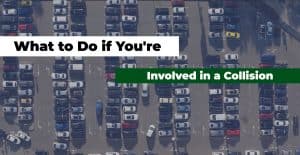Safety is something we often take for granted. Whether it’s starting the morning commute, taking a much-needed vacation, running daily errands, or touring country roads, there are things all drivers can do to help ensure traveling is enjoyable and safe for everyone. Here are some tips to help you do your part in keeping the roads safe:
Carry Appropriate Insurance
Many drivers are lax in their choice of car or motorcycle insurance, and it’s often because they misunderstand the purpose. As Real Car Tips explains, insurance serves a broader purpose than just helping to repair your vehicle when you get into a collision. It’s easy to misunderstand the complexity of insurance when you only get a bare-bones policy, as you are unlikely to actually use it. However, your insurance protects you from liability when you get into a collision that injures someone or destroys someone else’s property. The right policy can also help with things like lost wages, medical expenses, repairs, and replacements.
However, even with the right insurance, you’re not protected 100% of the time. If you’re convicted of reckless driving, your insurance premiums could increase, or you might even lose your policy. Depending on your state, you may need to take classes in order to clear the charge from your driving record. It’s best to avoid putting yourself in this situation altogether and remain alert on the road.
Check Your Tires
The importance of regularly inspecting your vehicle before you drive cannot be stressed enough. Your car can’t always stay in the best shape without proper care and maintenance. If you overlook any necessary tune-ups or replacements, you put yourself and others on the road at risk of getting into a collision. Start by checking the depth of your tires. Most vehicles have an indicator bar on the tires to help you with the inspection. If the bars are flush with their nearby ribs, then it’s time to replace your tires. If you drive a truck, you’ll need tires that can withstand typical and unexpected road conditions like mud or snow. You can find the tire comparisons online, which are rated based on their quality and prices.
Be Wary of Cruise Control
Cruise control has a tendency to make you zone out, which reduces your reaction time, and it also poses a threat in inclement weather. Snow or rain can cause a vehicle to skid or hydroplane, and you are much less likely to sense this and correct the situation if you don’t sense the changes in acceleration. Many drivers are surprised to learn that they can hydroplane on gravel roads or in sandy conditions as well. Any time the road surface is questionable, shut off cruise control and make adjustments accordingly.
Similarly, when conditions are slick or you’re in an area where weather patterns are changing quickly, make turns and go around curves more slowly. For more tips on driving in bad weather, you can view our guide to winter driving safety tips.
Stay in a Safe Position
It’s important to pay attention to exactly where you are within lanes as you go down the road, especially when traveling in slick conditions. You should try to ride on the side edges of lanes, but avoid going too far to the side. The center of lanes is where most oil builds up, and the extreme sides are where most debris collects, which is why it’s important to be mindful of your lane position.
Focus on the Road
Distracted driving isn’t just texting and driving. It’s actually anything that takes your hands, eyes, or mind off the main task at hand. Huffington Post points to some recent statistics indicating a steady increase in fatal collisions attributed to distracted driving, and while it might not seem like a big deal to check your GPS settings, glance at a phone notification, or change radio stations while you’re en route, you’re much better off if you just pull over to a safe location before doing anything other than driving.
Take Breaks as Needed
Getting behind the wheel when you’re feeling less than alert might not seem like a big deal, but unfortunately, drowsy driving is considered by some experts to be at the heart of around 10 percent of all collisions. It’s best to be on top of your game at all times. If you ever feel less than 100 percent, take a break, stretch your legs, or eat a snack. If you need to, take a quick nap. Damaging your vehicle or hurting yourself or someone else isn’t worth it.
Safe driving begins with getting comprehensive insurance and then inspecting your vehicle before hitting the road. Once behind the wheel, use cruise control carefully, focus properly, maintain your lane position, and stay alert when you drive. If you do all that, you’ll be on your way to safer riding.
Photo Credit: Pixabay.com










